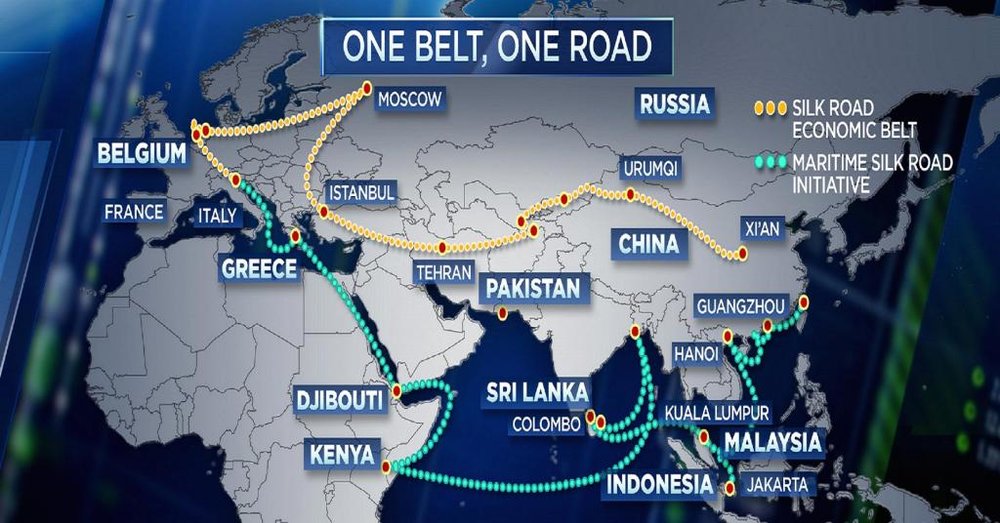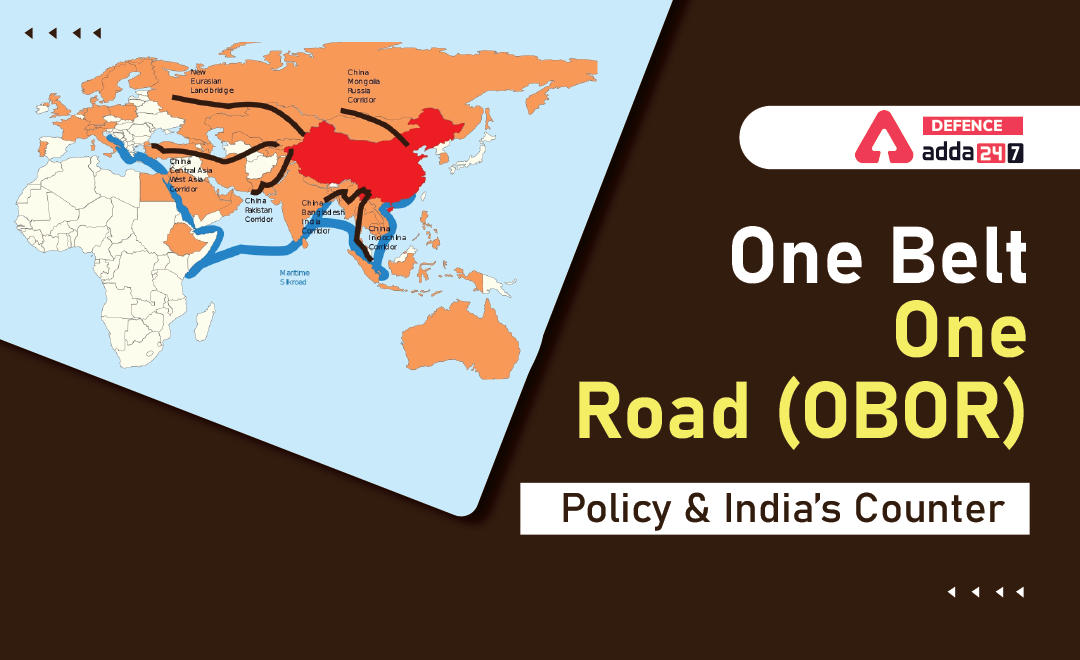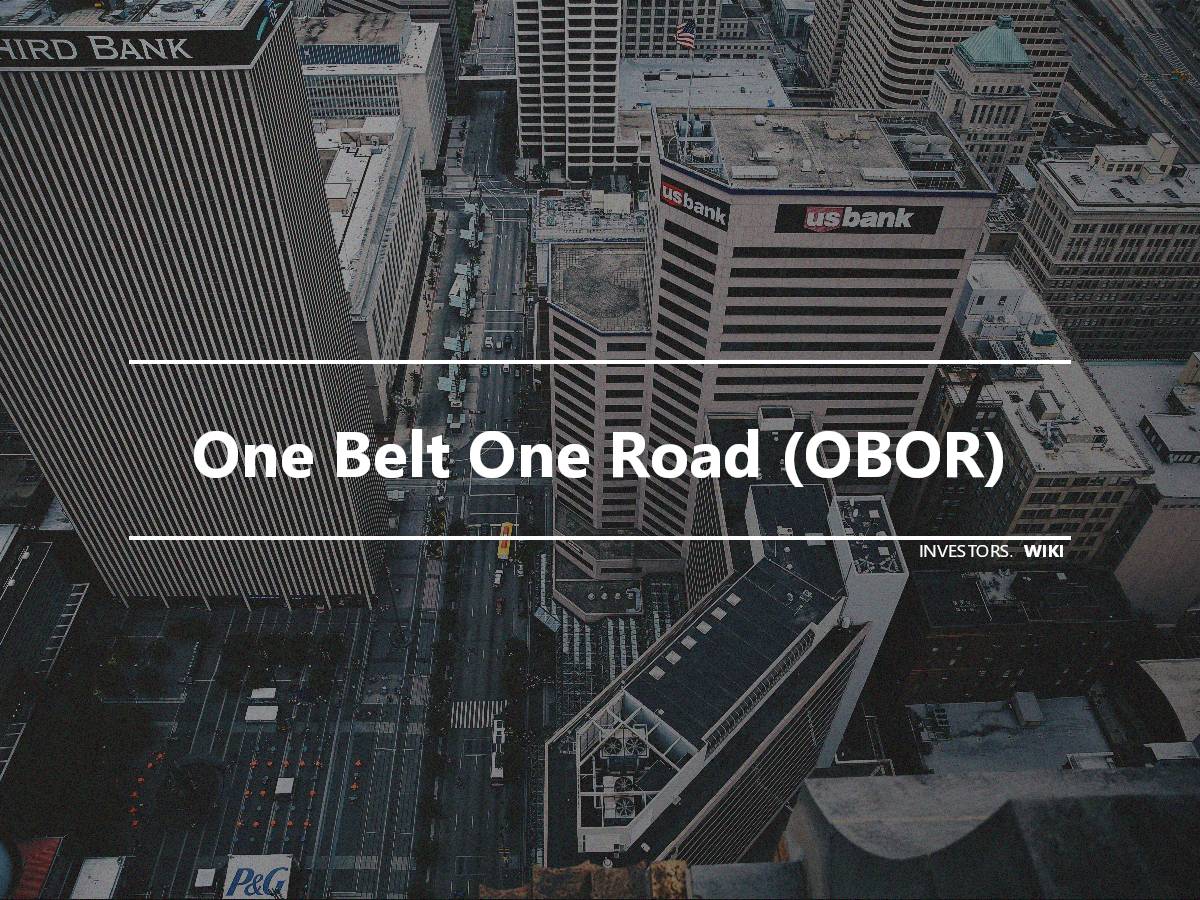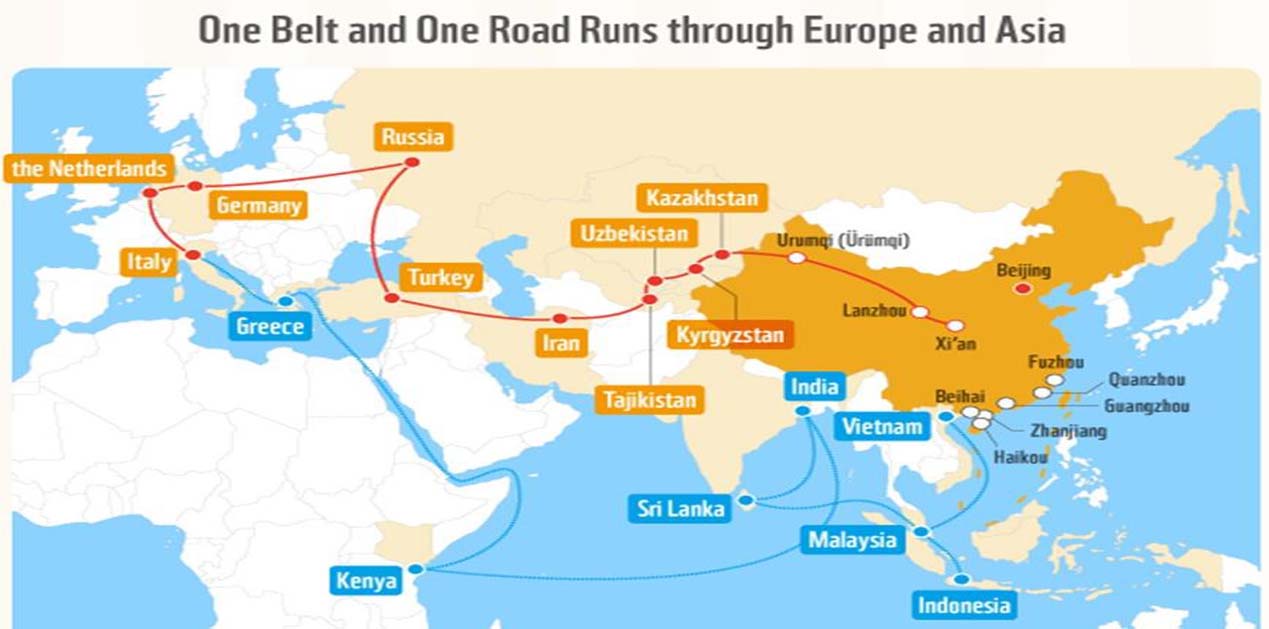
One Belt One Road (OBOR) business network. Source Sheu and Kundu [8]. Download Scientific Diagram
One Belt One Road (OBOR), the brainchild of Chinese President Xi Jinping, is an ambitious economic development and commercial project that focuses on improving connectivity and cooperation among.

One Belt, One Road, Silk Road’s new challenges, opportunities Tehran Times
This paper explains the importance of environmental care for the growth and development of the global world and how One Belt One Road Initiative (OBOR) can help to connect Asia, Europe, and Africa for economic cooperation and long-term sustainability. Paper, based on bibliometric analysis and utilizing Web of Science Core Collection database for calculation, summarizes total OBOR publications.

The Silk Road Economic Belt. One Belt, One Road Initiative (OBOR)
President Xi Jinping launched China's "One Belt, One Road" (OBOR) initiative in 2013 with the stated aim to connect major Eurasian economies through infrastructure, trade and investment. The initiative was later specified to contain two international trade connections: The land-based "Silk Road Economic Belt" and oceangoing "Maritime Silk Road."

CHINA One Belt One Road OBOR SILK ROUTE STRING OF PEARLS UPSC/IAS/PCS YouTube
The One Belt One Road (OBOR) initiative is implemented to improve the linkage between China and its neighboring countries in terms of economic ties, connectivity, partnership, and security cooperation. The crucial challenge encountered in OBOR initiative is the different gauge standards from different countries in the development of railway along the Silk Road. Another issue arose from the.

One Belt One Road (OBOR) by China Clear IAS
What is "One Belt, One Road" or OBOR? One Belt, One Road (OBOR) is China's much-touted new foreign and economic policy. It is a development strategy to connect China with Central Asia, Europe, and Indo-Pacific littoral countries. This policy has two components: Belt- The "One Belt" refers to the land-based "Silk Road Economic Belt.

Research Centre on OneBeltOneRoad (OBOR) College of Business City University of Hong Kong
The One Belt, One Road (OBOR) regional integration initiative OBOR's geographical extension, fields of cooperation and corridor design The 'One Belt, One Road' (OBOR) initiative consists of two trajectories: the Silk Road Economic Belt, an Eurasian overland trading road modelled on its ancient prototype,

One Belt One Road (OBOR) Policy and India's Counter
The initiative is rooted in China's long history of facilitating trade and commerce across the ancient Silk Road routes that connected Asia, the Middle East and Europe. The BRI was established with two primary components: the Silk Road Economic Belt and the 21st Century Maritime Silk Road. The Economic Belt part of the strategy aims to build.

Insights Daily Current Affairs, 09 November 2017 INSIGHTSIAS
The Belt and Road Initiative (BRI), formerly known as One Belt One Road (OBOR), has emerged as one of the top priorities for Chinese President Xi Jinping ever since he unveiled the initiative in. Expand. 1 Excerpt; Save. Logic of the Chinese developmental state and China's geo-economic engagement with Central and Eastern Europe.

(PDF) China ONE BELT, ONE ROAD (OBOR/BRI) Reiff Academia.edu
China's OBOR was launched in 2013 to boost economic integration with its neighbours and various trading partners. Footnote 25 Morgan Stanley has predicted that China's investment in OBOR member states will increase by 14% annually, and the total investment amount could double to $1.2-1.3 trillion by 2027. Footnote 26 The strategy is designed largely to fund projects from China's west.

Buy The One Belt One Road (OBOR) Initiative and the Port of Piraeus Understanding Greece’s Role
In 2016, for example, the AIIB approved $1.7 billion in loans to nine development projects along the Belt and Road. Chinese lenders are also powering the new Silk Road plan. Louis Kuijs, head of.

Obor china one belt one road initiative design Vector Image
China has identified 65 countries along the Belt and Road that will be home to hundreds of projects bearing the Obor stamp. Core projects include a $54bn land route from China's Xinjiang region.

One Belt One Road (OBOR) Investor's wiki
The new Silk Road corridors. Six corridors will complete this Silk Road: 1) The New Eurasia Land Bridge Economic Corridor. The New Eurasia Land Bridge Economic Corridor is one of the most ambitious OBOR projects; it consists in developing rail transportation between China and Europe through Kazakhstan, Russia and Belarus.

what is OBOR project one belt one roadchina一带一条路 YouTube
Belt and Road Initiative. The Belt and Road Initiative ( BRI or B&R [1] ), known in China as the One Belt One Road [a] sometimes referred to as the New Silk Road, [2] is a global infrastructure development strategy adopted by the Chinese government in 2013 to invest in more than 150 countries and international organizations. [3]

South Asia in Global Economy and the ‘One Belt One Road’ (OBOR) Vivekananda International
In 2013, China launched its 'One Belt, One Road' (OBOR) initiative. OBOR is China's broadly sketched vision of how it plans to boost regional integration in its wider neighbourhood. The initiative is unprecedented in terms of China's financial engagement and the innovative network-based project design which is intended to contribute to a more inclusive global governance.

One Belt One Road (OBOR) Blue Dot Network [UPSC International Relations]
China's Belt and Road Initiative (BRI), sometimes referred to as the New Silk Road, is one of the most ambitious infrastructure projects ever conceived. Launched in 2013 by President Xi Jinping.

High Risk for Companies Investing in One Belt One Road (OBOR)?
Executive summary. China's Belt and Road Initiative (also known as One Belt, One Road (OBOR)) is one of President Xi's most ambitious foreign and economic policies. It aims to strengthen Beijing's economic leadership through a vast program of infrastructure building throughout China's neighbouring regions. Many foreign policy analysts.
- Projetos Simples Com Arduino Para Iniciantes
- Linha Do Metro Azul Sp
- O Que E Uma Pessoa Sadica
- Partidas De Fortaleza Esporte Clube X Associação Desportiva Iguatu
- Hard Rock Café Sp Inauguração
- Catecismo Da Igreja Católica De A A Z
- Ddd Santa Cruz Do Sul
- Aphex Twin Richard D James
- O Número De Telefone Da Larissa Manoela
- Cefaclor é O Mesmo Que Cefalexina